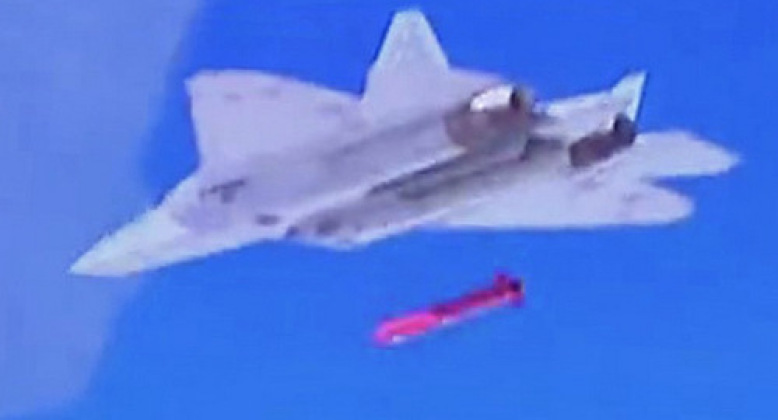Following reports that a Ukrainian Air Force Su-27 fighter and accompanying Su-24 strike fighter were shot down by Russian forces following a strike on Russia’s Belgorod region, conflicting reports from a number of Russian and Indian news outlets have indicated that a Russian Su-57 fighter was responsible. These have contradicted earlier reports that an S-300V4 air defence system using a 40N6 or possibly a 48N6DM surface to air missile was responsible. The Su-27 shootdown, although far from the first over Ukrainian skies, was particularly notable due to the 217km range at which it was achieved – making it by far the longest ranged fighter shootdown on record. The previous record for a surface to air shutdown was held by Russian S-400 systems based in Belarus, which shot down a Su-27 over Kiev in March at approximately 150km. Should the Su-57 have been responsible, however, it would mark a major milestone in the program and make the Russian fighter the very first in the world from the fifth generation to achieve a kill against an enemy fighter.

The Su-57 has been involved in operations over Ukraine since March, with aircraft confirmed to be carrying out strike and air defence suppression missions. This follows the previous deployment of Su-57s for combat testing and strike operations in Syria – although at the time the class was not operational in the Russian Air Force and advanced combat capable prototypes were used. The Russian Air Force currently fields an estimated six Su-57 fighters, although their advanced sensors including six AESA radars as well as highly potent electronic warfare systems has reportedly made them a valuable asset over Ukraine – particularly considering that no other Russian fighter class fields remotely comparable capabilities. The deployment of the aircraft for air to air combat, if confirmed, would reflect a much higher level of confidence in the fighter class – with its American fifth generation rival the F-35 being much more limited its their ability to contribute to complex air to air operations .

As Ukrainian Su-27s were operating in Russian airspace, and were confirmed to be armed primarily with air to ground rocket pods, deploying Su-57s for interception could have been considered a low risk means of gaining an air to air kill for the new fighter class. The possibility that the Su-57s were accompanied by other more combat tested fighters such as Su-35s, in case the Ukrainian Air Force had any unexpected surprises or the new fighter failed, also remains significant. Although the Su-57’s primary air to air armament the R-77M missile has only a 200km engagement range, its oversized R-37M missile can engage targets up to 400km away – with this being the missile reportedly used to intercept the Ukrainian aircraft. Footage seemingly showing an R-37M over a Ukrainian city, taken by residents, provided some support to this claim. While other secretive long ranged air to air missiles with unknown designations have also reportedly been developed for the Su-57, none are thought to have a range sufficient to engage a manoeuvrable fighter like the Su-27 at over 200km.

The fact that the Su-27 was involved in a hit and run attack on Russian territory, and was reportedly returning to base when shot down, makes reports of the Su-57’s involvement somewhat more credible since the target aircraft would not have posed a threat of retaliation and was likely struck from behind. The Su-27 has a maximum engagement range of 130km using R-27ER/ET air to air missiles, although the ability to use these against the Su-57 at respectable distances remains very limited. This is due to the ageing Soviet-built jet’s limited sensors and the new fighter’s advanced electronic warfare capabilities and stealth profile. Thus at 217km the risk to the Su-57 of engaging its target in air to air combat over Russian airspace would have been negligible, while the benefits for the fighter program remain significant not only for morale domestically but also for its export prospects and international reputation – both of which have been harmed by long delays in bringing the class into service. The Russian-Ukrainian War has presented multiple rare opportunities for Russian assets to gain kills and be tested in combat against relatively capable enemy fighters, with the S-400 and the Su-57’s predecessor the Su-35 both having gained their first air to air kills in March over Ukrainian skies. The Su-57 is not expected to be deployed similarly aggressively, but could see further defensive air to air operations within Russian airspace.
